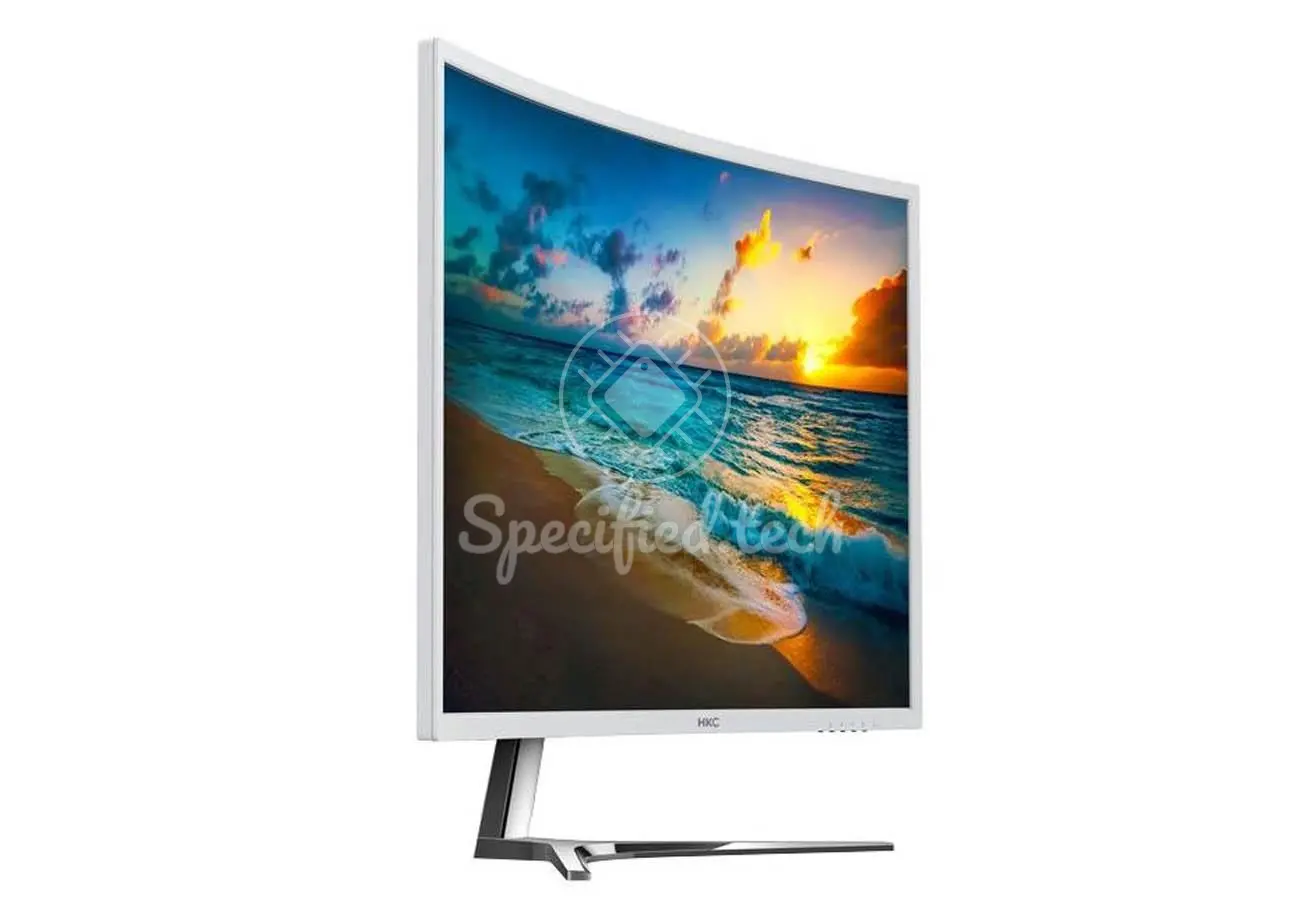
Within this article we will take a closer look at the technical specifications of the NB24C monitor from HKC. For this we will talk about all possible categories that could be relevant. To start with, we will look at the display, talk about the design and in the next section we will go into the features of the monitor. Other features such as power consumption, connectors and certifications will follow later in the text.
Display
The monitor belongs to the device class 23 inches ( 59.9 cm on the diagonal). While classic CRT monitors were built with a screen ratio of 4:3, this monitor has a ratio of 1.778 : 1 (width to height). The display is a VA panel. The panel has a resolution of 1920 x 1080 px. The pixel density is 93 ppi. The pixel pitch is 0.272 mm. The continuous possible brightness specified by the manufacturer HKC is 250 nt. The panel is illuminated by W-LED. The built-in panel ensures stable color reproduction of the image, even at deviating viewing angles, by means of its 178 ° (horizontal) viewing angle. HKC promises stable color reproduction moreover within a 178 ° vertical angle. The refresh rate is horizontally seen at the NB24C 30 khz to 80 khz. Vertically, however, the image renews at a minimum rate of 60 hz up to 75 hz. The minimum response time of the monitor is ms.
Color representation
The panel has a bit depth of 8 per color channel, but what does that mean? The number of bits determines how many colors can be encoded for the individual pixels of the display. For an 8-bit panel, for example, this is 256 different colors (2^8 = 256). However, since we usually display three different colors per pixel at the same time, in theory about 16 million (256^3) different colors are possible by mixing the three pixels. A 10-bit panel could even display a billion colors.
Contrast ratio
Contrast ratio is a common measurement used to represent the maximum relative differences in brightness between black and white. It describes the ability of a screen or projector to produce a high-contrast image and is the quotient of the maximum and minimum displayable luminance. The higher the values are away from each other, the stronger the quantitatively seen difference between black and white is set up, which in turn results in an improved image quality. This monitor from HKC has a static contrast ratio of 3000 : 1 , according to the manufacturer. In contrast to the static contrast ratio, the dynamic contrast ratio changes the brightness of the panel itself in addition to the difference measurement from black to white. In addition to the difference between the brightest and the darkest pixel, the backlight is thus changed. Since the brightness of the panel may not be able to be adjusted exactly to a single pixel, a so-called halo effect is possible. The value of 100000 : 1 of dynamic contrast ratio for the monitor NB24C cannot provide any information about the severity of the halo effect here. Therefore, it is more useful to compare the static contrast ratio.
HDR
The monitor supports all HDR modes listed here:
screen design
The size of the monitor (stand included) is 42.1 x 62.1 x 14.8 cm (HxWxD).
Curved
The NB24C is a curved monitor with a curvature of 1.8 m
Rotate, tilt and swivel
The monitor NB24C can be tilted. The angle of inclination to the rear is 15. The monitor can be tilted forward by 5 degree.
Ports
The monitor can be connected via 1 VGA ports.
camera
This monitor does not have a camera.
Features
- The display/monitor supports Frame Rate Compensation.
Power consumption
On average, the monitor consumes approximately 45 w. In standby mode, the device consumes approximately 0.5 w. When switched off, on the other hand, the monitor consumes only 0.5 w. The monitor can be operated on a 220v power supply. The power grid has to supply a frequency of 50 hz to 60 hz.

